Ginger – Not just an Asian culinary spice (part 3)
Do you know that ginger offers anti-inflammatory and antioxidative effects? Read more about this powerful spice in our third blog article….
Discover the anti-inflammatory and antioxidative effects of ginger and learn about...
- the occurence of inflammation
- how specific active ingredients of ginger manage to inhibit inflammation
- reactive oxygen species and their negative effects
- how giner and ist actives support the bodys’ own antioxidative forces
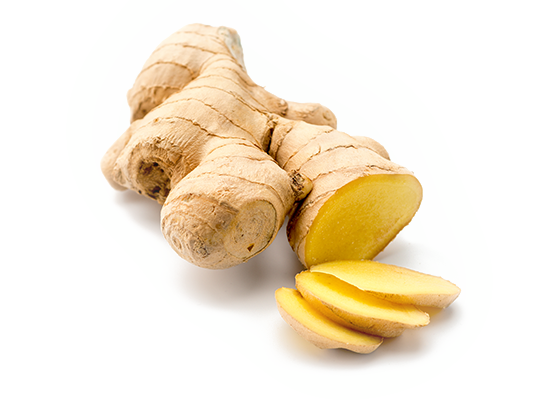
Ginger’s anti-inflammatory effects
If pathogens or foreign substances penetrate our body, the innate immune system provides an initial barrier by activating various processes, including the initiation of inflammatory processes. Inflammation is an immunological process involving different types of signal molecules such as cytokines. The aim of this biological process is to react to foreign substances or injuries in order to eliminate them.
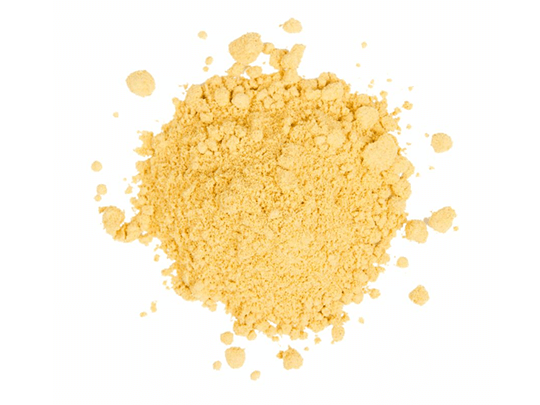
Anthelmintic effects of ginger
Ginger is also effective by reducing colonization of epithelial cells by intestinal pathogens (e.g. enteropathogenic E. coli, enteroinvasive E. coli) and is also involved in the inhibition of production of cholera toxins (Daswani et al. 2010). Besides bacterial pathogens, ginger has demonstrated anthelmintic effects in preclinical studies against human Ascaris lumbricoldes (Kalesaraj, 1974), Anisakis larvae (Goto et al., 1990) and Haemochus contortusa, which is a pathogenic ruminant nematode (Iqbal et al.,2001). Ginger also provided anthelmintic activity in sheep, thus justifying the age-old traditional use of this plant in helminth infestation (Iqbal et al., 2006).
But how exactly does ginger manage to inhibit Inflammation?
Researchers have put forward several hypotheses: According to Srivastava and Mustafa (1992), the anti-inflammatory effect of ginger is based on its ability to inhibit prostaglandin and leukotriene biosynthesis, i.e. the formation of specific inflammatory mediators. In more detail it was shown, that gingerol has the ability to inhibit arachidonate-5-lipoxygenase, an enzyme required for the biosynthesis of leukotriene (Kiuchi et al. 1992). Leukotriene antagonists are also used to treat allergic rhinitis and asthma. In addition, [8]-gingerol, but not the derivative [6]-gingerol, has been shown to inhibit the expression of cyclooxygenase-2 (COX-2).
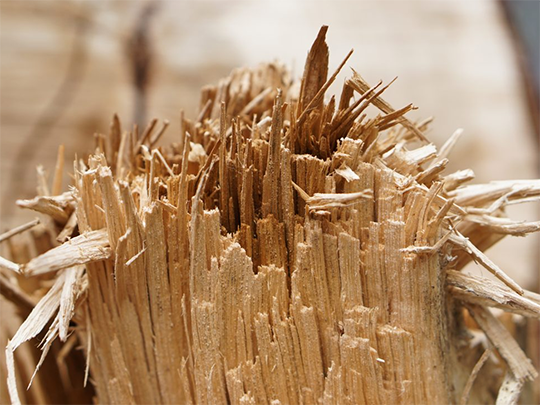
Frondoza et al. (2004) again report that ginger extract suppresses the activation of the tumor necrosis factor α (TNF- α) and the expression of COX-2 in the human joint mucosa – but whether these biochemical processes can also be transferred to our farm animals needs to be examined. In any case, proinflammatory cytokines such as TNF-α, which are mainly secreted by macrophages, play an important in inflammatory processes (Bode and Dong, 2011).
Ginger and its antioxidative effects
In the case of persistent stress, e.g. during hot spells or too high stocking density, there is a disproportionate formation of intermediate products of the metabolism, which are known as free radicals – mainly as reactive oxygen species (ROS). These ROS are constantly formed in the mitochondria during oxidative metabolism. However, if the amount of ROS exceeds the antioxidative capacity, oxidative stress can occur. Oxidative stress causes damage to biological macromolecules, such as nucleic acids, membrane lipids and proteins, and disturbances of normal metabolism.
Did you know?
Ginger root contains a very high level (about 3.85 mmol/100g) of total antioxidants. This value is only exceeded by pomegranate and some berry species (Halvorsen et al., 2002).
An indicator for measuring oxidative stress is the concentration of malondialdehyde in the blood…
…which is a product of lipid peroxidation. Higher levels of malondialdehyde correlate with higher oxidative stress. The main protection of the organism against oxidative stress is the production of antioxidant enzymes. And it seems that ginger supports the body exactly on this topic. Reports in rats suggest that feeding rats with ginger reduces lipid peroxidation and supports the activity of the body’s own antioxidant enzymes (including superoxide dismutase and glutathione peroxidase).
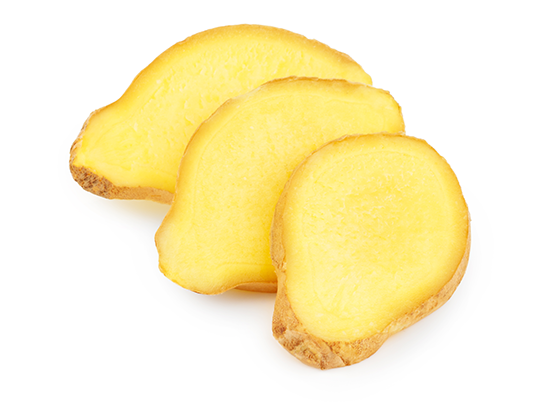
Did you know that consumption of ginger can reduce lipid peroxidation?
Ahmed et al (2008) reported that consumption of ginger reduces lipid peroxidation and normalizes the activities of superoxide dismutase and catalase and glutathione and glutathione peroxidase, glutathione reductase and glutathione S-transferase in rats. Consequently, these effects lead to a reduction in oxidative stress, which in turn has been shown in lower malondialdehyde concentrations (Ahmed et al., 2008; Uz et al., 2009).
Karunakaran et al. (2017) also demonstrated that aqueous extracts of ginger significantly reduced carrageenan-induced inflammation in rat paws and associated edema. Carrageenan is a potent chemical used to release inflammatory and proinflammatory mediators (prostaglandins, leukotrienes, histamine, bradykinin, TNF-α etc.). Not only in this study it was shown that ginger is able to reduce inflammation in tissue: Choi et al. (2013) also tested the anti-inflammatory effects of dried ginger in mice treated with lipopolysaccharides (LPS). They found that it reduces the pathological inflammatory symptoms in the liver and the concentration of circulating pro-inflammatory cytokines IFN-y and IL-6. The activation of NfκB was also inhibited, as was the expression of COX-2.
What does this mean in terms of inflammation?
IFN-y and IL-6 belong to the cytokines that regulate the inflammatory reaction of the organism and NfκB is of great importance for the regulation of the immune response, cell proliferation and cell death. The activation of NFκB is considered critical for the development of inflammation. COX-2 is particularly expressed in damaged or inflamed tissues, where it forms prostaglandins that enhance or maintain an inflammatory response. Therefore, a low concentration of these markers apparently represents a low level of inflammatory processes with which the organism has to deal, hence saving energy and not being that susceptible for further diseases.
Do you want the entire article as PDF including all references?
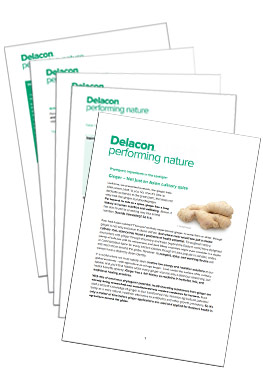
You are only one click away.
Did you know the positiv effects of ginger on respiratory tract?

Anne Oberdorf
Anne has always been fascinated by the unknown, the diversity and beauty of nature. Her love for nature brought her to Delacon in 2018 after studying agricultural sciences, where she worked as Technical Communications Manager and later as Product Manager Aquaculture. Since February 2021, she has been taking a new, natural career path outside of Delacon.

Elisabeth Rohrer
After her study in agriculture sciences at the university of natural resources and life sciences in Vienna, Elisabeth joined the Delacon team in December 2013 as Technical Communications Manager - a position, she always exerted with pleasure. Since 2021, her task areas have been extended and thus, she is also supporting colleagues in writing offside the technical focus as Content Manager. Elisabeth describes herself as a great animal and nature lover and prefers to spend her free time high up in the mountains with her little family, away from the hustle and bustle.










